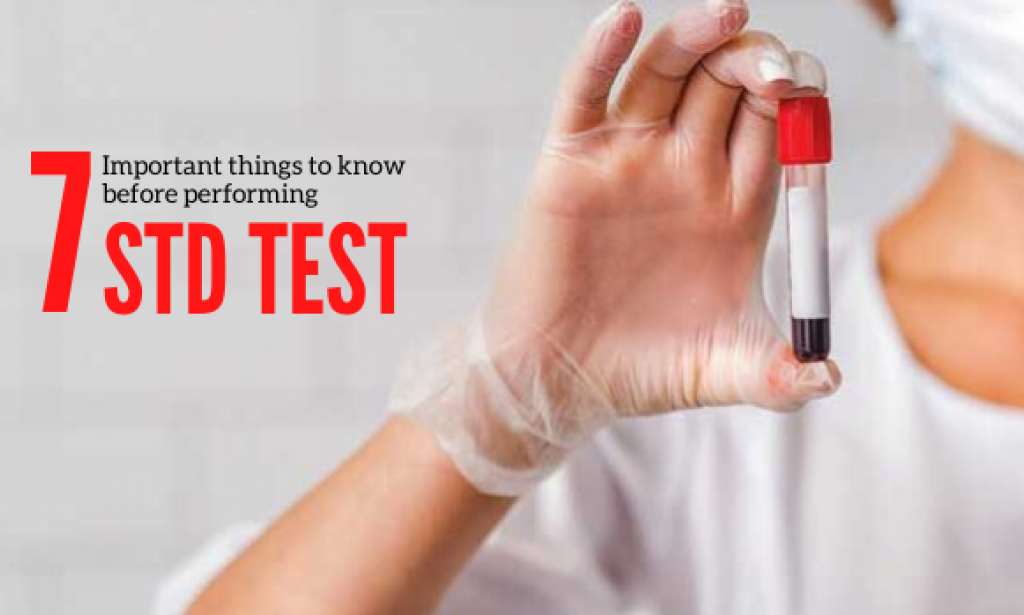If you remain sexually active but are not involved in monogamous relationship, then you are at greater risk for getting sexually transmitted diseases and should be screened. Most STDs, whether chlamydia, gonorrhea or herpes are asymptomatic and they do not cause any symptoms. Other than skin lesions, pain or other symptoms that may show up in due course, you might be infected by your partner. If your mate is also asymptomatic, both of you might be at greater risk for serious complications such as – infertility, arthritis or some cancers particularly anal, cervical or throat cancers.
It is important to know that "sexually active" includes people who are having oral only which can either be giving or receiving. Gonorrhea, syphilis, herpes simplex and chlamydia can all be transmitted through oral sex. Read on to know what you should learn about the process.
- “Testing” is not similar to “screening” – Though both the terms can be used interchangeably, “testing” and “screening” is not the same thing. If you show any symptoms of an STD such as sores on the genitals that might indicate herpes or syphilis, then your doctor will conduct necessary tests to know your condition. On the other hand, when you do not have any symptoms, your doctor may suggest checking your sexual activity through screening.
- Different STDs and sexual activities may change screening methods of your doctor – Regretfully, a single urine or blood sample is not at all sufficient to inform your doctor if you are having any kind of STD. Though HIV and syphilis require blood samples for screening, chlamydia and gonorrhea might need either urine screen, rectal swab, throat swab or all of them. The same is applicable for herpes and if you are having a lesion, then you require a swab of the lesion for further testing. In case you do not have a lesion, it is only a blood test but you might need to conduct several tests to ensure you do not have STD.
If you have had unprotected anal, vaginal or oral sex, then the activities might require different testing or screening to detect an STD. If you have enjoyed unsafe oral and vaginal sex and your doctor is worried about gonorrhea, then you should perform a urine test and swab your throat. If you want to perform urine test for gonorrhea, your doctor may miss out an infection in the throat. This is noteworthy to consider as many patients do not want to inform their health care providers about their specific sexual habits. Physicians might feel embarrassed to ask about anal and oral sex as he is aware about all your sites of exposure. - Urethra swabs are considered to be a thing of the past – There had been a time when sexually transmitted diseases required men to stick a cotton swab inside the urethra at the tip of your penis. Luckily, during those days men found urethra swab uncomfortable or scary, but now those STD tests are urine based.
- Insurance can provide coverage for everything – Insurance provides coverage for STD testing and screening at a doctor’s office. Most places provide STD screening and testing resources for free and these clinics also offer anonymous testing. Though the STD results you get with the help of your doctor can be protected through doctor-patient laws, your results will be saved in your medical file. If you do not feel comfortable with them or are talking to your physician about STDs, then the clinics that provide anonymous testing are said to be a great alternative. You can get more information about free STD screening by visiting your local health department’s website.
- You do not need to perform anything before screening – You do not need to avoid eating food or anything else before conducting an STD screening. If you require performing a urine sample, then you should avoid peeing for at least 2 hours before the “deposit.” “During the urine tests, the DNA of the STD organism will be checked. When you pee extremely close to the test, you clear the urethra of DNA build-up. Due to this reason, you do not have to pee a little into the toilet before collecting the sample. The urine has the most DNA at the start and so, that is want will be needed to test.
- You will obtain the results quickly – It should not take longer than 48 hours to obtain your desired results. You might be asked to dial a number or log into a secure website. If you need to visit the physician’s office for testing, then they may call you with the results.
- You might need to return back for further screening – Though some STDs show up right away, the ones that require blood tests like HIV might not appear on a test for two weeks or more than that. Make sure the doctor knows when you have had sex and know you may have to return for additional tests.
Thus, you need to visit a nearest sexual health clinic where you can perform necessary STD tests and know if you have been infected with any disease.


You must be logged in to post a comment.